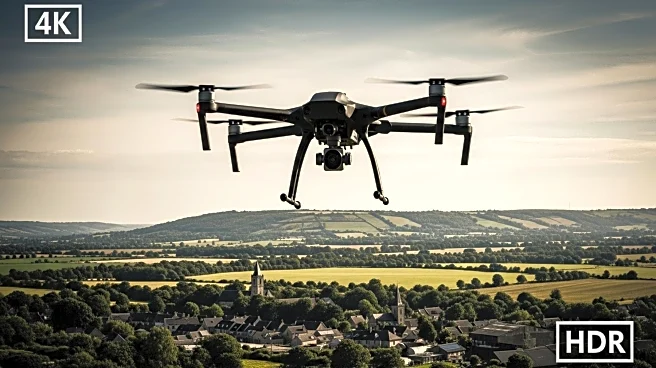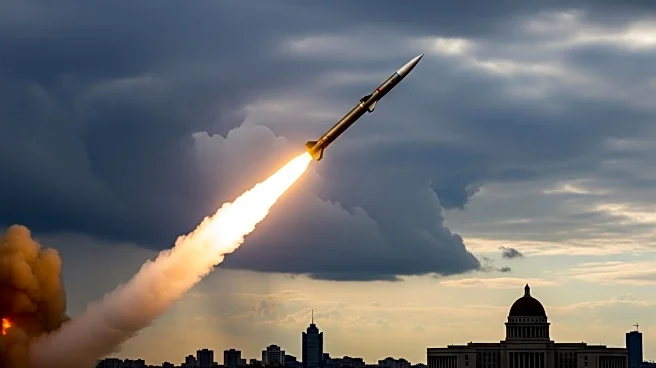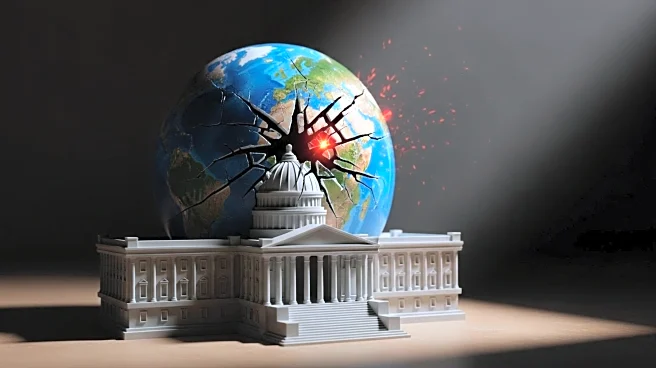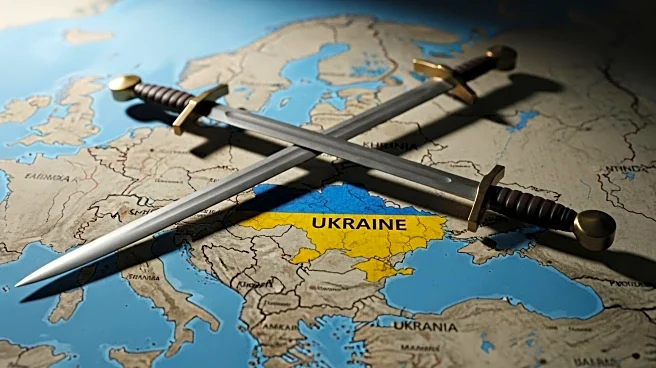What's Happening?
Russia has significantly increased its drone attacks on Ukraine, launching over 2,000 drones between July 7 and July 13, 2025. This marks a substantial escalation compared to previous months. The attacks included over 800 long-range strike and decoy drones, along with cruise and ballistic missiles, resulting in the largest air assault on Kyiv since the war began. The Kremlin denies targeting civilians, but the U.N. Human Rights Monitoring Mission in Ukraine reported a 50% increase in civilian deaths in the first five months of 2025 compared to the previous year. Ukraine has responded by deploying interceptor drones, successfully shooting down nearly a fifth of the attacking drones during the massive assault.
Why It's Important?
The escalation in drone attacks by Russia has severe implications for Ukraine's civilian population and infrastructure. The increase in civilian casualties highlights the humanitarian crisis and the ongoing threat to safety and security in Ukraine. The surge in drone production by Russia, with a 17% increase from April to May 2025, suggests a prolonged conflict with intensified military operations. This situation poses challenges for international diplomacy and peace efforts, as well as the stability of the region. The continued attacks may lead to further displacement of civilians and strain on Ukraine's resources.
What's Next?
Ukraine is likely to continue enhancing its air defense capabilities to counter the increasing drone threats. International pressure on Russia may intensify, with potential diplomatic efforts to negotiate a ceasefire. The global community, including the U.S. and European allies, may consider additional sanctions or support for Ukraine to mitigate the impact of the attacks. The humanitarian situation may prompt further international aid and intervention to support affected civilians.
Beyond the Headlines
The psychological impact of the constant drone attacks on the Ukrainian population is profound, leading to increased stress and trauma. The concept of 'acoustic terror' describes the lasting effects of the noise and fear associated with the attacks, affecting mental health and well-being. The long-term implications include potential shifts in population demographics due to displacement and the need for extensive rebuilding and recovery efforts once the conflict subsides.













